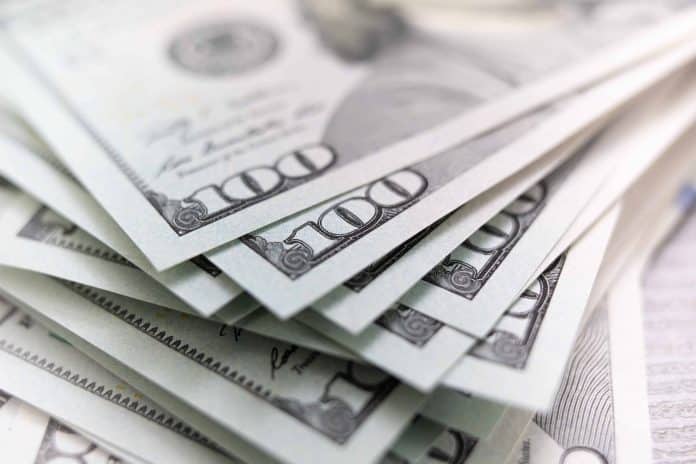
Not everyone has enough money to purchase the things they want and need, which is why loans exist. Loans offer people the chance to get the money they need from a lender. Eventually, they will need to pay off the lender over a set time frame. There are several types of loans available and one particular option available is a federal loan. A federal loan is a loan that the federal government backs or offers directly. There are several different federal loan opportunities available. The benefit of these loans is that they typically come with benefits such as easier eligibility, reduced interest rates, forgiveness options, and more!
What are the Different Types of Federal Loans?
The reason that individuals require a loan will vary; it all depends on their current situation. For instance, some people might want to get a home loan while other people might want an educational loan. There is a specific loan option for everyone, but it is important to look through different loan opportunities available to figure out which is right for you. Some of the most popular forms of federal loans include:
- FHA Home Loans
- Single Family Housing Repair Loans and Grants
- VA Home Loans
- Single Family Guaranteed Loan Program
- Single Family Housing Direct Loans
- Direct Unsubsidized Loans
- Direct Subsidized Loans
FHA Home Loans
The Federal Housing Administration (FHA) insures mortgages that the bank or other approved lenders issue. The best thing about these kinds of mortgages is that they have lower down payment requirements than most conventional home loans. They are also easier to be eligible for since they have lower credit score requirements. These loans are common among people that earn low income and wish to own a home. It is also a common opportunity for first-time homebuyers.
If a person has a credit score of at least 580, they are eligible for a 3.5% down payment. Individuals that have even worse credit scores of 500 to 579 can still be eligible–their minimum down payment requirement would have to be 10%.
Other than traditional mortgages, the FHA also provides other types of mortgages such as:
- 203(k) Home Improvement Loans: This loan comes with extra money to help with costs such as home repairs, renovations, and improvements.
- Energy Efficient Mortgages: This loan comes with extra money that deals with home improvements that make homes more energy efficient, resulting in lower bills.
- Section 245(a) Loans: These mortgages have a reduced monthly payment to start the process. The monthly payment will increase over time as a person’s income increases, which in turn reduces the total loan term.
- Home Equity Conversion Mortgages: This is a reverse mortgage created for senior homeowners that are at least the age of 62 and are willing to receive money from their home equity.
Single Family Housing Repair Loans and Grants
The United States Department of Agriculture (USDA) offers this loan option. It can be referred to as the Section 504 Home Repair Program. The main goal of this financing support option is to provide very low-income individuals with the money they need to improve, fix, or modernize their homes. One of the benefits that comes with this loan is that they provide a fixed interest rate of 1%! The maximum loan amount you can get from this loan is $40,000. Qualifying senior homeowners have the chance to get a maximum amount of $10,000 for a grant. This comes to a total of $50,000 when it is combined with a loan.
VA Home Loans
The United States Department of Veterans Affairs (VA) home loans are a type of mortgage option that focuses on helping veterans, active service members, and eligible military spouses. Even though these are federal loans, private lenders issue these loans. The VA is the agency that insures these loans. These loans come with no down payment requirements, do not need private mortgage insurance (PMI), provide competitive interest rates, and can be easier to be eligible for!
Single Family Guaranteed Loan Program
The United States Department of Agriculture (USDA) provides these loans. These loans are also known as the Section 502 Guaranteed Loan Program. This loan support option offers qualifying lenders support in providing low-income (or moderate-income) households lending opportunities. It can lower the risk that lenders would typically face when they guarantee the loan. For people to qualify for this loan option, they would need to:
- Meet income requirements
- Have the property be their main residence
- Have an eligible citizenship status
This is a benefit to people that earn low income because there are no credit requirements, no down payment requirements, and it offers a more affordable method to deal with the rural home buying process. But, recipients can use these loans towards building, rehabilitating, improving, or moving to a property in a qualifying rural area.
Single Family Housing Direct Home Loans
This is another home loan option that the United States Department of Agriculture (USDA) offers. It also goes by the name of the Section 502 Direct Loan Program. The aim of this loan option is to assist people with low-income and very low-income to buy a house in eligible rural areas. It can do this through the improvement of the individual’s ability to pay off the loan through payment assistance. The payment assistance that this loan offers is a subsidy that will temporarily decrease the mortgage payment. The amount a homebuyer can receive will depend on their adjusted family income. To apply for this loan, some eligibility requirements include:
- Not having clean, safe, appropriate housing
- Not being able to receive a loan that works for their current situation
- Reside in the property as their main residence
- Have an eligible citizenship status
Not every property is available for this type of loan either. Instead, properties need to be:
- Normally be less than 2,000 square feet
- Have a market value that is in the qualifying area’s loan limit
- Not be used to produce income
Direct Unsubsidized Loans
If you are thinking of financing your education, Direct Unsubsidized loans might be the option for you. This loan option is available from the United States Department of Education (DOE). It is only available for undergraduate, graduate, and professional students. How much you can borrow is defined by your school, which takes into consideration several factors. The maximum loan amount is $20,500 for one year. If you are interested in applying for this loan, you will need to fill out a Free Application for Federal Student Aid (FAFSA) form. For any questions you have, you should contact your school’s financial aid office.
Direct Subsidized Loans
Another federal loan that can assist students to fund their higher education is a Direct Subsidized Loan. This loan option is also provided by the United States Department of Education (DOE). It is to provide relief for undergraduate students that show evidence of financial need. One of the benefits that are associated with this loan option is the interest rate that comes with the loan. The DOE will pay the interest rate on these loans:
- The student is in school at least part-time
- During the grace period (the first six months after the student leaves school)
- If the loan moves into a period of deferment
How much you can borrow is defined by your school, which takes into consideration several factors. If you are interested in applying for this loan, you will be required to fill out a FAFSA form. For any more questions you have, you should contact your school’s financial aid office.
The Final Verdict
When it comes to government financing options, there are many opportunities available. These loans might be a better option to think about rather than conventional loans because they could come with more benefits. Some benefits that individuals might be able to see include better loan terms, easier eligibility requirements, and less interest rates. You should think about federal loans when you need financing, whether it is for your home, education, and more.




















